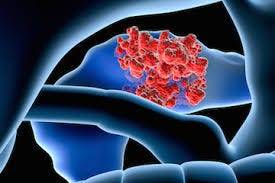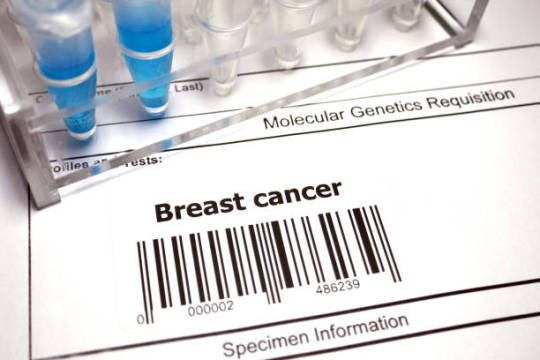#brca2 and pancreatic cancer
Text

That is the percent chance of getting pancreatic cancer at 44, the year my mom died of it.
0 notes
Text
Nf-κb Signaling In Tumor Pathways Focusing On Breast And Ovarian Cancer
ORR and a fifty seven per cent PSA response had been introduced. In sufferers without BRCA mutations, the tumour response price was solely eleven per cent and PSA response 6 per
Many of those small molecules are able to restoring the expression of p16INK4a in various cancers. Genistein, an isoflavone current in soybean, is a cancer chemopreventive agent that inhibits cell proliferation and induces apoptosis (Gullett et al., 2010 ). Li et al. reported that genistein represses early breast tumorigenesis by way of epigenetic regulation of CDKN2A by impacting histone modifications as properly as by recruiting the BMI1-c-MYC complicated to the regulatory area in the CDKN2A promoter ( Li et al., 2013b ). In prostate cancer, treatment with genistein increased acetylated histones 3 and four of the CDKN2A transcription start sites ( Majid et al., 2008 ). Thus, soybean merchandise containing genistein could be helpful in preventing breast and prostate cancer by way of transcriptional activation of CDKN2A by modulating its epigenetic silencing ( Li et al., 2013b and Majid et al., 2008 ). Rajendran et al. reported that Nrf2 wildtype mice confirmed a better incidence of colon tumors than Nrf2 heterozygous (Nrf2+/− ) mice when handled with 1,2-dimethylhydrazine.
Pancreatic screening in high-risk patients such as BRCA2 mutation carriers has been proposed to reduce PDAC-related mortality. In 2012, the International Cancer of the Pancreas Screening (CAPS) Consortium revealed pointers on the management of patients with elevated risk for familial PDAC (Canto et al. 2013). Just as a result of the genomic check doesn’t pick up a prostate cancer mutation does not mean you don’t have mutation/s that causes prostate cancer.
advanced tubo-ovarian cancer. The current commonplace of care in the first-line setting for most sufferers with newly recognized superior tubo-ovarian cancer is platinum-taxane chemotherapy and cytoreductive surgery with a goal to remove all of the seen cancer.
significant dose discount and delays. In HRD-positive metastatic pancreatic cancer, veliparib with FOLFOX (folinic acid, fluorouracil, and oxaliplatin) chemotherapy confirmed an ORR of fifty per cent, median PFS of seven.2 months, and median OS of eleven.1 months. In breast cancer, the section three BrighTNess trial randomly
We have been actually anticipating one thing as his dad died of prostate cancer and his mom died of breast cancer....but nothing hereditary found. He then took the Guardant blood take a look at and a variety of other variants/mutations have been found, which expanded his therapy options. Reactivation of silenced CDKN2A or the inhibition of epigenetic repression of the gene could be a rational strategy for the prevention or remedy of varied cancers. In comparability with previous trials such because the practice-changing SOLO-1, which was carried out in a
My cancer has PTEN misplaced which facilitates the copy of the cancer cells. FOXA1, Si-ZBP-89, Jmjd3, Mutant UHRF1 and c-JUN induce p16INK4a protein expression by re-activation of the CDKN2A promoter. Schematic structure of the INK4a /ARF locus and the function of p16INK4a in cells.
of olaparib with bevacizumab as first-line upkeep remedy for advanced tubo-ovarian cancer, no matter BRCA1/2 mutation status. The Monte Carlo simulation of 1,000 patients confirmed that the cost and effectiveness within the PFS illness section have been $3,124 ± $1,534 and zero.905 ± 0.449 QALY for placebo and $139,563 ± $33,046 and 1.544 ± 0.408 QALY for maintenance olaparib. The cost-effectiveness acceptability curve confirmed a nearly 54% likelihood of maintenance olaparib and 46% probability of placebo being a cheap strategy at the threshold of $200,000 per further QALY gained (Figure 4).
Furthermore, olaparib didn't significantly improve outcomes in cohort B that comprised different HRD mutations. The trials; PRIMA, PAOLA-1, and VELIA, offered at a Presidential Symposium on the Congress, provide evidence of improved survival for almost all affected person
brca1 pancreatic cancer risk
sub-types in high-grade superior tubo-ovarian cancer. The enhanced Warburg impact in addition to the elevated production of lactate in ATM-deficient CRPC cells prompted us to determine which enzyme within the glycolysis pathway is regulated by ATM deficiency. Actually, we examined the mRNA stage of LDHA in addition to different enzymes along the glycolysis pathway by RT-qPCR in the two cell strains. Only LDHA was dramatically upregulated in C4-2/ATM-KO cells (Fig. 4B), and this upregulation is further supported by the western blot displaying ~three-fold increase of LDHA protein expression in ATM-KO cells (Fig. 4C). To additional confirm the upregulation of LDHA by ATM loss, we handled C4-2 cells with ATM inhibitor KU and located that the expression of LDHA increased after 72-h therapy of cells with KU (Supplementary Fig. 2).
#environmental causes of pancreatic cancer#pancreatic cancer environmental causes#pancreatic cancer mutation gene#can pancreatic cancer be inherited#most common gene mutation in pancreatic cancer#does smoking cause pancreatic cancer#pancreatic cancer mutations#fammm syndrome#can smoking cause pancreatic cancer#is pancreatic cancer genetic#atm mutation pancreatic cancer#pancreatic cancer hereditary risk#what are possible risk factors that increase an individual's chance of developing cancer?#brca2 pancreatic cancer#brca1 and pancreatic cancer#pancreatic cancer inherited#brca gene and pancreatic cancer#four environmental factors that cause cancer#brca1 pancreatic cancer risk#brca gene pancreatic cancer#brca2 and pancreatic cancer#pancreatic cancer syndrome#pancreatic cancer genes#pancreatic cancer smoking#brca foundation#is pancreatic cancer rare#brca1 pancreatic cancer#pancreatic cancer age of onset#cdkn2a pancreatic cancer#causes of pancreatic cancer
1 note
·
View note
Text
Olakin 150mg (Olaparib) | Order Now At IEB Pharma
Olakin 150mg, also known as Olaparib, is a medication belonging to the class of drugs called PARP inhibitors. Developed and marketed by AstraZeneca, Olaparib has gained significant attention in the medical community for its efficacy in treating certain types of cancer, particularly ovarian and breast cancers. In this comprehensive overview, we will delve into the mechanism of action, indications, dosage, side effects, and recent advancements related to Olakin 150mg.
Mechanism of Action:
Olaparib works by inhibiting the enzyme poly ADP-ribose polymerase (PARP). PARP is involved in the repair of damaged DNA in cells. By inhibiting PARP, Olaparib prevents cancer cells from repairing their damaged DNA, ultimately leading to their death. This mechanism is particularly effective in cancer cells that already have impaired DNA repair mechanisms, such as those with mutations in BRCA genes.
Indications:
Olaparib is primarily indicated for the treatment of advanced ovarian cancer and metastatic breast cancer in patients with mutations in BRCA1 or BRCA2 genes. Additionally, it has shown promising results in other types of cancer, including prostate cancer and pancreatic cancer, especially in patients with BRCA mutations or other DNA repair deficiencies.
Dosage:
The recommended dosage of Olakin 150mg (Olaparib) may vary depending on the type of cancer being treated, the patient's overall health, and other medications they may be taking. It is typically administered orally in the form of tablets and is usually taken once or twice daily with or without food. The dosage should be determined by a healthcare professional based on individual patient factors.
Side Effects:
Like any medication, Olaparib can cause side effects, although not everyone experiences them. Common side effects may include nausea, vomiting, diarrhea, fatigue, loss of appetite, headache, and anemia. More serious side effects such as bone marrow suppression, which can lead to an increased risk of infection or bleeding, may also occur but are less common. Patients should report any persistent or severe side effects to their healthcare provider promptly.
Recent Advancements:
In recent years, research on Olaparib has expanded beyond its initial indications. Studies have explored its efficacy in combination with other cancer treatments, such as chemotherapy and immunotherapy, as well as its potential for use in earlier stages of cancer treatment. Additionally, ongoing clinical trials are investigating Olaparib's effectiveness in various cancer types and patient populations, including those without BRCA mutations.
Conclusion:
In conclusion, Olakin 150mg (Olaparib) represents a significant advancement in the treatment of certain types of cancer, particularly ovarian and breast cancers with BRCA mutations. Its unique mechanism of action, coupled with ongoing research and clinical trials, holds promise for improving outcomes for cancer patients in the future. However, it is essential for healthcare providers to closely monitor patients receiving Olaparib for potential side effects and adjust treatment as needed to ensure optimal safety and efficacy.
0 notes
Text

The common types of hereditary cancer syndromes include:
1. Inherited Breast and Ovarian Cancer Syndrome (HBOC): HBOC primarily stems from mutations within the BRCA1 and BRCA2 genes. Females carrying these genetic alterations face notably heightened risks of breast and ovarian malignancies. Furthermore, BRCA mutations correlate with elevated susceptibilities to other cancers, such as prostate, pancreatic, and male breast cancer.
2. Lynch Syndrome (Hereditary Nonpolyposis Colorectal Cancer, HNPCC): Lynch syndrome arises from mutations affecting genes responsible for DNA mismatch repair, notably MLH1, MSH2, MSH6, and PMS2. Those with Lynch syndrome exhibit increased predispositions to colorectal cancer, alongside risks of endometrial, ovarian, gastric, and urinary tract cancers.
3. Familial Adenomatous Polyposis (FAP): FAP manifests with the proliferation of numerous polyps within the colon and rectum, which pose a cancer risk if untreated. Primarily linked to mutations in the APC gene, FAP substantially heightens the likelihood of early-onset colorectal cancer.
4. Li-Fraumeni Syndrome (LFS): LFS, a rare hereditary cancer syndrome, arises from mutations in the TP53 tumor suppressor gene. Individuals with LFS confront elevated lifetime risks of various cancers, including breast cancer, sarcomas, brain tumors, and adrenal gland tumors, often occurring at a young age.
5. Hereditary Diffuse Gastric Cancer (HDGC): HDGC entails an escalated susceptibility to diffuse gastric cancer, characterized by infiltration of the stomach wall. This predisposition predominantly results from mutations in the CDH1 gene, which encodes a protein crucial for cell adhesion.
6. Cowden Syndrome (CS): CS stems from mutations in the PTEN gene and is typified by multiple noncancerous hamartomas, alongside heightened risks of developing diverse cancers, such as breast, thyroid, and endometrial cancers.
7. Hereditary Retinoblastoma (RB1): Hereditary retinoblastoma arises from mutations in the RB1 gene, leading to the formation of cancerous tumors in the retina, typically emerging in early childhood.
8. Von Hippel-Lindau Syndrome (VHL): VHL arises from mutations in the VHL gene and is characterized by the development of tumors and cysts in various organs, including the kidneys, adrenal glands, pancreas, and central nervous system.
If you have a family history of cancer, you should undergo regular cancer screenings for the early detection and management of cancer. You can undergo a regular full body health checkup at Jaslok Hospital Mumbai, which is one of the best hospitals in Mumbai for cancer screening and treatment.
#cancer#hereditary cancer#hereditary cancer syndrome#Lynch syndrome#inherited breast and ovarian cancer syndrome#familial adenomatous polyposis#full body health checkup#regular health checkups#cancer screening#health checkup packages
0 notes
Text
Olaparib: News
The PARP inhibitor olaparib has already shown promise in treating patients with ovarian and breast cancers who have BRCA1 or BRCA2 germline mutations. Now, a study reported in the Journal of Clinical Oncology has found that the drug also shrinks prostate and pancreatic tumors in people who have these mutations.
BRCA mutations disable DNA damage repair via homologous recombination. PARP inhibitors…
View On WordPress
0 notes
Text

Understanding Pancreatic Cancer Risk Factors
Pancreatic cancer is a complex adversary, and understanding its risk factors is crucial for early detection and prevention. Here are some factors that might elevate the risk:
Smoking: Cigarette smoking significantly increases the risk of pancreatic cancer.
Age: The majority of cases occur in individuals over 65, emphasizing the importance of regular check-ups, especially as we age.
Family History: Individuals with a family history of pancreatic cancer may have a higher risk. Genetic counseling can provide insights.
Inherited Gene Mutations: Certain genetic syndromes, such as changes in the BRCA2 gene, Lynch syndrome, and familial atypical multiple mole melanoma (FAMMM) syndrome, can heighten susceptibility.
Occupational Exposure: Certain occupations, such as working in metal industries, might be associated with an increased risk.
Obesity: Maintaining a healthy weight through a balanced diet and regular exercise is essential.
Alcohol Consumption: Excessive alcohol intake has been linked to an elevated risk.
Chronic Inflammation: Conditions like chronic pancreatitis can contribute to an increased risk.
Regular health check-ups, maintaining a healthy lifestyle, and discussing family medical history with healthcare providers are key steps in early detection and proactive management. Your health is our priority at Basavatarakam Indo American Cancer Hospital & Research Institute. Stay informed, stay vigilant.
#PancreaticCancer#RiskFactors#Prevention#HealthAwareness#EarlyDetection#BasavatarakamCancerHospital#BasavatarakamIndoAmericanCancerHospital#IndoAmericanCancerHospital#IndoAmericanHospitalHyderabad#bestcancerhospitalhyderabadindia#basavatarakam#basavatarakam hospital#indo american hospital#best cancer specialist in india#best cancer hospital#indo american cancer hospital#best cancer treatment in india#best cancer hospitals in india#basavatarakamcancerhospital basavatarakam#basavatarakam cancer hospital
1 note
·
View note
Text
Breaking the Silence: Understanding Male Breast Cancer – Risks, Symptoms, and Early Detection

Breast cancer has long been associated primarily with women, but it's essential to recognize that men are not immune to this disease. While breast cancer in men is relatively rare, misconceptions that it's solely a women's issue can lead to delayed diagnoses and potentially poorer outcomes. In this article, we aim to shatter the silence surrounding male breast cancer, raise awareness about its risks, symptoms, and the critical importance of early detection.
Male Breast Cancer: A Rarity but a Reality
Breast cancer predominantly affects women, but it's crucial to acknowledge that men can also develop this disease. In the United States, approximately one out of every 100 breast cancer cases occurs in men. Despite its rarity, male breast cancer warrants attention, understanding, and awareness.
Types of Breast Cancer in Men
Male breast cancer shares similarities with its female counterpart, including different subtypes. The two most common forms of breast cancer in men are:
Invasive Ductal Carcinoma (IDC): This cancer originates in the ducts but then extends beyond them into other parts of the breast tissue. IDC can also metastasize, spreading to other areas of the body.
Ductal Carcinoma in Situ (DCIS): DCIS is a breast condition in which cancer cells are confined to the lining of the ducts and haven't invaded other breast tissues. However, if left untreated, it may progress to invasive breast cancer.
Recognizing Symptoms
Awareness of potential symptoms is vital for early detection in men. Breast cancer in men can manifest with common signs such as:
Lump or Swelling: A noticeable lump or swelling in the breast.
Skin Changes: Skin changes in the breast area, including redness or flakiness.
Irritation or Dimpling: Skin irritation or dimpling on the breast surface.
Nipple Discharge: Discharge from the nipple.
Nipple Changes: Changes in the appearance or discomfort in the nipple area.
It's crucial to note that these symptoms may also occur due to non-cancerous conditions. However, if you notice any of these signs or any unusual changes in your breast area, consult your doctor promptly for a proper evaluation.
Factors That Increase Risk
Several factors can elevate a man's risk of developing breast cancer:
Age: The risk of breast cancer increases with age, with most cases being diagnosed after age 50.
Genetic Mutations: Inherited mutations in genes like BRCA1 and BRCA2 can raise the risk of breast cancer in men.
Family History: Men with close family members who've had breast cancer are at a higher risk.
Radiation Therapy: Men who've undergone chest radiation therapy have an increased risk of breast cancer.
Hormone Therapy: Past use of estrogen-containing drugs for prostate cancer treatment can heighten the risk.
Klinefelter Syndrome: This genetic condition results in extra X chromosomes and can lead to higher estrogen levels, increasing the risk of breast cancer.
Testicular Conditions: Certain conditions affecting the testicles can also elevate the risk.
Liver Disease: Cirrhosis or scarring of the liver can disrupt hormone balance, potentially raising the risk.
Weight: Overweight or obese older men have a higher risk of developing breast cancer.
Risk Reduction Strategies
If you have a family history of breast or ovarian cancer or are aware of a BRCA1 or BRCA2 gene mutation in your family, it's crucial to discuss this with your doctor. Genetic counseling may be recommended, as these gene mutations can increase the risk of not only breast cancer but also high-grade prostate cancer and pancreatic cancer.
If genetic testing reveals a BRCA1 or BRCA2 mutation, your doctor will provide guidance on early cancer detection strategies if needed. Early detection is often key to successful treatment outcomes.
Conclusion: Breaking Stereotypes and Promoting Awareness
Breast cancer doesn't discriminate by gender. While it's less common in men, understanding the risk factors, recognizing symptoms, and seeking prompt medical attention are vital steps in ensuring early detection and improved outcomes for male breast cancer patients. Awareness and education are essential in breaking the stereotype that breast cancer is exclusively a woman's disease and promoting gender-neutral healthcare for all.
Male Breast Cancer Treatment Challenges
Diagnosing male breast cancer relies on recognizing key signs and symptoms, including painless breast lumps, skin changes, nipple alterations, and nipple discharge. However, research into male breast cancer treatment has been limited due to its rarity and underrepresentation in clinical trials. While treatments for men have paralleled those for women, involving anti-hormone drugs like tamoxifen and chemotherapy, evolving clinical trial protocols aim to include more male participants. Yet, the scarcity of male breast cancer cases remains a challenge in studying and advancing its treatment options.
Thank you for reading and raising awareness about male breast cancer.
For More Information: https://youtu.be/058VyMSczlc
0 notes
Text
Unraveling Pancreatic Cancer: Understanding, Challenges, and Advances

I. Introduction to Pancreatic Cancer
Pancreatic cancer, a devastating healthcare challenge, arises from abnormal cell growth in the pancreas — a vital organ regulating digestion and blood sugar levels. With a low early detection rate, it often advances unnoticed until later stages, complicating treatment options. Risk factors, including smoking, obesity, and genetic predisposition, underscore the need for proactive healthcare strategies. As a notorious culprit behind high mortality rates, pancreatic cancer necessitates heightened public awareness, improved screening methods, and enhanced research efforts to develop effective treatments. This introduction sheds light on the critical intersection of healthcare, early diagnosis, and innovative solutions in addressing this formidable disease.
II. Epidemiology and Risk Factors

Pancreatic cancer exhibits a concerning epidemiological pattern, with a higher incidence in older individuals and specific demographics. Prominent risk factors, such as smoking, obesity, and family history, significantly contribute to its development. Genetic mutations like BRCA1 and BRCA2 also play a role, along with conditions like chronic pancreatitis and diabetes. This interplay between demographic and genetic elements underscores the complexity of pancreatic cancer’s origin. An understanding of these epidemiological factors provides crucial insights into targeted prevention strategies and early detection efforts, offering potential pathways to mitigate the impact of this aggressive disease on public health.
III. Pathophysiology

Pancreatic cancer’s pathophysiology involves intricate cellular changes in the pancreas, leading to uncontrolled cell growth and tumor formation. Genetic mutations and molecular alterations disrupt normal cellular regulation, promoting the survival and proliferation of cancer cells. The tumor microenvironment, comprising surrounding tissues and immune cells, further aids tumor progression by fostering angiogenesis and immune evasion. This hostile environment contributes to the disease’s aggressive behavior and resistance to treatment. Understanding the pathophysiological mechanisms at play is pivotal in developing targeted therapies that can interrupt the cancer’s growth signals, modulate the tumor microenvironment, and ultimately improve treatment outcomes for individuals affected by pancreatic cancer.
IV. Types of Pancreatic Cancer

Pancreatic cancer encompasses diverse types, primarily pancreatic adenocarcinoma and neuroendocrine tumors (NETs). Pancreatic adenocarcinoma, the most common form, originates in the exocrine cells lining the pancreatic ducts and is notorious for its aggressive nature. In contrast, neuroendocrine tumors stem from hormone-producing cells within the pancreas and exhibit a slower growth rate. These tumors are further categorized as functional or non-functional based on hormone secretion. Less prevalent types include acinar cell carcinoma and adenosquamous carcinoma. The varying behavior, prognosis, and treatment responses of these pancreatic cancer subtypes emphasize the importance of accurate diagnosis and tailored management strategies to address the unique characteristics of each malignancy.
V. Clinical Presentation

Pancreatic cancer’s clinical presentation often evolves in a subtle and insidious manner. Early symptoms, such as unexplained weight loss, abdominal discomfort, and jaundice, may go unnoticed or be attributed to other conditions. As the disease advances, late-stage symptoms like severe pain, digestive difficulties, and back discomfort become prominent. These vague and non-specific signs pose diagnostic challenges, frequently leading to delayed detection. Recognizing the potential for pancreatic cancer in the presence of these symptoms is critical for early intervention. Improved awareness among healthcare professionals and the public is pivotal in ensuring timely diagnosis and treatment, ultimately enhancing the prognosis for individuals affected by this complex disease.
VI. Diagnostic Approaches

Diagnostic approaches for pancreatic cancer involve a multi-pronged healthcare management strategy. Advanced imaging techniques, including CT scans, MRI, and endoscopic ultrasound, aid in visualizing tumors and determining their extent. Biopsies and pathological analyses provide definitive diagnoses. Tumor markers like CA 19–9 offer additional insights. Implementing these diagnostic tools in a coordinated healthcare management plan is crucial for accurate and timely identification of pancreatic cancer. Early detection can significantly impact treatment outcomes. Integrating these approaches into healthcare management protocols can enhance the efficiency of diagnosis, facilitate prompt initiation of treatment, and ultimately improve the prognosis for individuals facing the challenges of pancreatic cancer.
VII. Staging and Prognosis

Staging and prognosis assessment are pivotal in guiding pancreatic cancer treatment strategies. Utilizing the TNM staging system, which considers tumor size, lymph node involvement, and metastasis, helps categorize the disease’s extent. Prognostic factors such as the stage at diagnosis, tumor resectability, and patient overall health influence treatment decisions and survival expectations. Unfortunately, most cases are diagnosed at advanced stages, limiting curative options. The five-year survival rates remain low due to aggressive tumor behavior and challenges posed by late-stage detection. However, advancements in treatment approaches, including surgery, chemotherapy, and targeted therapies, offer potential for improved outcomes. Combining accurate staging with individualized treatment plans offers the best chance at enhancing prognosis and quality of life for those affected by pancreatic cancer.
VIII. Treatment Options

Pancreatic cancer treatment options necessitate comprehensive hospital management strategies. Surgical interventions, like the Whipple procedure and distal pancreatectomy, aim to remove localized tumors. Chemotherapy regimens, such as gemcitabine and FOLFIRINOX, target cancer cells systemically. Radiation therapy is employed to shrink tumors before surgery or alleviate symptoms in advanced cases. Emerging targeted therapies and immunotherapies hold promise. Hospital management ensures coordinated care, addressing potential surgical complications, chemotherapy side effects, and radiation therapy planning. Palliative care offers supportive measures to enhance patients’ quality of life. Integrating these treatment modalities within hospital management protocols optimizes patient care and provides a multifaceted approach to tackle the challenges posed by pancreatic cancer.
IX. Challenges in Treatment

Treatment of pancreatic cancer is marred by several challenges. Late-stage diagnosis is common due to vague symptoms, limiting curative options. Additionally, the cancer’s intrinsic resistance to chemotherapy and radiation often hampers treatment effectiveness. Surgical interventions can be complex and carry risks. Even successful surgeries may face complications like infections or post-operative pancreatic fistulas. The aggressive nature of the disease and its potential impact on patients’ overall health further complicate treatment decisions. Addressing these challenges requires a multidisciplinary approach, personalized treatment plans, and ongoing research efforts. Developing novel therapies, improving early detection methods, and enhancing supportive care can collectively mitigate the hurdles posed by pancreatic cancer treatment.
X. Research and Emerging Therapies

Continuing Werner Forssmann’s legacy, ongoing research harnesses advanced technologies to unlock innovative therapies. Cutting-edge studies explore genetic, cellular, and precision medicine approaches, reshaping healthcare. Emerging therapies, such as gene editing and personalized immunotherapies, show promise in treating previously untreatable diseases. These breakthroughs rely on interdisciplinary collaborations, integrating bioinformatics, nanotechnology, and advanced diagnostics. While challenges remain, the synergy of research and technology is paving the way for transformative changes in patient care. Inspired by Forssmann’s fearless curiosity, researchers continue to challenge conventions, forging new paths to address unmet medical needs and revolutionize the future of healthcare.
XI. Prevention and Awareness

In the wake of Werner Forssmann’s legacy, emphasis on prevention and awareness is reshaping healthcare paradigms. Aided by modern technologies, proactive health monitoring and early intervention are gaining prominence. Public awareness campaigns educate communities about preventive measures, fostering healthier lifestyles and reducing disease burdens. Leveraging digital platforms and data analytics, healthcare systems can identify at-risk populations and tailor interventions. Forssmann’s audacious pursuit of medical advancement inspires a collective commitment to proactive healthcare practices. As prevention gains traction, his legacy serves as a reminder that empowering individuals with knowledge and promoting early detection are integral to shaping a healthier society and steering healthcare toward a future that prioritizes well-being.
XII. Conclusion

In conclusion, Werner Forssmann’s pioneering spirit continues to reverberate through modern healthcare, inspiring innovation and patient-centric approaches. His legacy underscores the transformative potential of challenging norms and pushing scientific boundaries. Amid this legacy, QMe Healthcare Management and Information System stand as exemplars of this ethos, streamlining care delivery, enhancing patient experiences, and enabling personalized treatment strategies. As we look ahead, Forssmann’s journey reminds us that progress in healthcare stems from audacious curiosity and technological integration. By embracing his legacy and harnessing contemporary tools, we forge a path towards a healthcare future that honors tradition while embracing the transformative power of advanced systems for the betterment of patient well-being.
0 notes
Text
The Causes and Risk Factors of Liver Metastases: Understanding the Spread of Cancer to the Liver
Liver metastases (liver secondary )cancer, occur when cancer cells from other parts of the body spread to the liver. This article delves into the origins of liver metastases, highlights common primary cancers that frequently metastasize to the liver, and explores the risk factors associated with the development of liver metastases.
Origins of Liver Metastases: How cancer cells spread to the liver
The liver plays a vital role in filtering blood, metabolizing nutrients, and detoxifying harmful substances. Its rich blood supply makes it susceptible to receiving cancer cells from various parts of the body. The process of cancer cells spreading to the liver involves several stages:
1.Invasion: Cancer cells invade nearby tissues and blood vessels, allowing them to enter the bloodstream or lymphatic system.
2.Circulation: Cancer cells detach from the primary tumor site, enter the bloodstream or lymphatic vessels, and travel to distant organs, including the liver.
3.Adhesion: Cancer cells attach to the walls of the liver's blood vessels, enabling them to penetrate the liver tissue.
4.Proliferation: Cancer cells establish a new tumor mass within the liver, forming liver metastases.
Common Primary Cancers: Discussing primary cancers that frequently metastasize to the liver
Certain types of cancer have a higher propensity to metastasize to the liver. The following are some primary cancers commonly associated with liver metastases:
1.Colorectal Cancer: Colorectal cancer is one of the most common cancers that spreads to the liver. The liver is often the first site of metastasis due to its close proximity to the colon and rectum.
2.Breast Cancer: Breast cancer can metastasize to various organs, including the liver. Hormone receptor-positive breast cancer has a higher likelihood of liver metastases.
3.Lung Cancer: Lung cancer can spread to the liver, particularly in advanced stages. Small cell lung cancer has a higher tendency to metastasize compared to non-small cell lung cancer.
4.Pancreatic Cancer: Pancreatic cancer frequently spreads to the liver, partly due to the shared blood supply between the pancreas and liver.
5.Gastric (Stomach) Cancer: Stomach cancer can metastasize to the liver, especially in advanced stages of the disease.
Risk Factors: Identifying factors that increase the likelihood of developing liver metastases
Several factors can increase the risk of developing liver metastases. These risk factors include:
1.Stage of the Primary Cancer: Advanced stages of primary cancer, where cancer cells have already spread to other organs, increase the likelihood of liver metastases.
2.Tumor Size and Location: Larger primary tumors and tumors located in close proximity to the liver have a higher propensity to metastasize to the liver.
3.Lymph Node Involvement: The presence of cancer cells in regional lymph nodes suggests a higher risk of metastasis, including liver metastases.
4.Vascular Invasion: Cancer cells invading blood vessels or lymphatic vessels have an increased potential to travel to distant organs, including the liver.
5.Genetic Factors: Inherited gene mutations, such as BRCA1 and BRCA2, can increase the risk of certain cancers, which in turn may lead to liver metastases.
6.Chronic Viral Infections: Viral infections such as hepatitis B and C increase the risk of liver cancer, which can subsequently result in liver metastases.
Conclusion:
Liver metastases occur when cancer cells from other parts of the body spread to the liver. Understanding the origins of liver metastases, common primary cancers that frequently metastasize to the liver, and the associated risk factors is crucial to effectively diagnose, treat, and manage liver metastases. By recognizing the mechanisms through which cancer cells spread to the liver, medical professionals can develop targeted treatment strategies.
The identification of primary cancers that commonly metastasize to the liver allows for early monitoring and proactive interventions. Patients diagnosed with colorectal, breast, lung, pancreatic, or gastric cancer should receive regular liver screenings to detect potential metastases promptly.
Furthermore, understanding the risk factors associated with liver metastases helps in assessing an individual's susceptibility and developing preventive measures. By addressing these risk factors, such as managing primary cancer progression and treating chronic viral infections, healthcare providers can potentially reduce the incidence and severity of liver metastases.
As ongoing research continues to shed light on the intricate processes of cancer metastasis, advancements in detection methods and treatment options for liver metastases are being explored. Targeted therapies, immunotherapies, and combination treatments are showing promise in improving outcomes and prolonging survival rates.
Ultimately, a comprehensive approach involving multidisciplinary care, early detection, and effective treatment strategies is essential in managing liver metastases. By raising awareness, supporting further research, and empowering patients with knowledge, we can collectively strive towards better outcomes for individuals facing the challenges of liver metastases.
Remember, early detection and intervention are key factors in improving prognosis and quality of life for patients with liver metastases. If you or a loved one are at risk or experiencing symptoms related to liver metastases, consult with healthcare professionals for appropriate screenings and personalized care.
0 notes
Text
Harriet Harris, née Kuritsky gave up the ghost...
~ May fourth, 2005
wedded bliss nearly fifty years
half a century almost
me not most favorite grown offspring,
she (when alive) did boast,
about youngest sister and her family,
unlike me – severely socially withdrawn
a veritable wallflower
as a result, I suffered emotional contusions.
When thru life yours truly did
nervously, frightfully, blisteringly coast,
nevertheless her spirit dwells
within wonky tonk prodigal host
crafted in the following poem he doth post
holding tumblr full of favorite brew
probiotic kombucha drink
to thee mother dearest
foregone fading memories
your long haired heir does toast.
Often these days,
the following genuine sentiment
Matthew Scott Harris
doth wish to share
how one and only son,
remembers his mother
cuz about eighteen years
after she succumbed
courtesy of terminal illness
he trots out and updates yearly
a poem initially crafted
when she passed away.
I still reckon eyes how yours truly
analogous to the fountainhead
of Atlas shrugged off,
whose fanciful essence coalesced
immensely helped sired,
and yelped bloody murder
when goddamn bitch in heat whelped
at what human biology wrought
doggone muttering schlep
despite being nurtured,
proffered, and registered
tender loving care
within whose womb,
a mature haploid female cell
experienced fertilization courtesy
complimentary male haploid sperm
underwent fertilization yielding
zygote thru mother nature's gestation
this sole male offspring born,
thus subsequently after her demise,
yours truly shouldered himself with self scorn.
He clearly recounts
when she felt the scythe of the grim reaper
as if her death occurred yesterday...,
when all mine troubles
(emotional, financial, and physical)
moost definitely
no more farther away
then present moment.
Tempus fugit popular worded couplet
brings Latin alive with succinct precision
or imagine an hourglass
where fine granules
analogous to last remaining
grains representing sands of time
trickle from one to another
(upper to lower) bulbed chamber.
Just prior when coroner decreed death,
yet once in a lifetime opportunity prevailed,
wherein said self (me) chose
NOT to stand vigil at deathbed
(analogous to sitting Shiva)
of she who begat
an older and younger daughter
(mine sibling sisters).
Last breath(s) expelled while mama
tethered to machines,
one or more helped diminish
agonizing, depressing, and writhing
pain and discomfort
figuratively and literally
wracked and pinioned once fitness
and health conscious, flirtatious
industrious, tenacious, and vivacious body,
dinged, harangued, peppered
nefarious carcinoma by dint of
common atomic beastie boy
among certain Semitic people
linkedin to presumptuous inbreeding.
According to google search
frequency of breast, ovarian,
and uterine cancer among Ashkenazi
elicited revelatory statistic
1% of all Ashkenazi Jews
living today inherited
a defective copy of one
of their BRCA2 genes.
Unbeknownst to them,
these carriers of BRCA2 mutation
at increased risk for developing
breast, ovarian, prostate
and pancreatic cancer.
Indomitable esprit de corps
eradicated courtesy regimen of
chemotherapy and radiation,
which latter malignant terminal illness
(no joke) riddled a former robust
Arthur Murray ballroom dance instructor
(think approximately sixty nine years past),
whose coy and coquettish demeanor
instantaneously caught fancy of handsome
twenty something papa at his prime.
Before rigor mortis quickly
stole precious lifeblood, and
final minutes ticked away until
countdown to... realm
of absent consciousness
scant moments before subtle transition
slipped our beloved mother
out of misery (a veritable battleground)
where she did silently rage into deadzone...,
neither final adieu, caress, grief...,
nor poem written...
never communicated to deceased,
not an iota of sorrowful lament
bequeathed, prevailed, relinquished...
over lifeless body (mommy dearest)
relegated limp suddenly
cold stone pilot less body,
where morgue aged corpse
kept in cold storage
(despite aversion to frigid air
exhibited when mama alive)
preparatory to cremation process.
Rather... suppressed resentment
exhibited itself at 1148 Greentree Lane
(partially listed abode -
Matthew Scott Harris,
where family of mine then resided)
by mister recalcitrant,
felt ambivalent carte blanche blasé affection
regarding once young bride,
(who metaphorically
smothered cingular heir insync
with dada i.e. Boyce Brandon Harris),
cuz he (yours truly) overstayed
livingsocial under same roof as parents,
which happenstance situated
at me boyhood home
once located upon
six plus wooded acres;
324 Level Road
constituted the whittled down
once sprawling Leiper Estate,
which encompassed about
one hundred plus acre wood
home to Winnie the Pooh.
Both thee aforementioned
supposed biological guardians
railed, screamed, tormented
(albeit verbally traumatized)
yours truly, upon attaining
mine eighteenth birthday,
when great expectations
greatly exacerbating
emotionally hard times,
which ill suited poet de jure
experienced, brickbats rained
akin to fountainhead spewing
painful pelting piercing
poisonously pummelling (python like
hashtagged with moniker Monty)
down upon these
considerably mooch younger lovely bones,
whose anger (mine) smoldered
linkedin to constant epithets of expletives
out the mouths of those who begat me,
subsequently their livid with rage
tsunami festered within me
every holy moly molecule.
Mine atomized corporeal being
manifesting itself as deprivation
to embrace dear mama
attended at hospital with
both my non twisted sisters;
one hailed from Woodbury, New Jersey
and the younger staked out
modest digs within Bend, Oregon,
meanwhile thee grim reaper
did patiently soon scythe
heading back to his old curiosity shop,
a rather bleak house, I now conclude.
0 notes
Text
What is Breast cancer genetic testing?

A breast cancer (BRCA) gene test is a blood test that looks for alterations (mutations) in the BRCA1 and BRCA2 genes. This test can determine your risk of developing breast and ovarian cancer. A BRCA gene test does not screen for cancer.
BRCA1 and BRCA2 are genes that aid in the regulation of proper cell proliferation. Changes in one of these genes may be inherited. These modifications are known as mutations. If you inherit a BRCA gene mutation, you are more likely to develop breast and ovarian cancers, as well as several other malignancies such as prostate and pancreatic cancer.
A negative result indicates that no BRCA gene mutation was discovered, but it does not rule out the possibility of developing cancer in the future.
An unclear result indicates that a BRCA gene mutation was found, but it may or may not be associated with elevated cancer risk. If your findings were inconclusive, you may need more testing and/or monitoring.
A positive result indicates the presence of a BRCA1 or BRCA2 mutation. These mutations increase your chances of developing cancer. But not everyone with the mutation gets cancer.
For further information, seek the opinion of Dr. Rajinder Kaur Saggu one of the best Breast cancer surgeon in Delhi.
0 notes
Text
How To Recognize Male Breast Cancer
Bosom malignant growth by and large considered a sickness that influence ladies yet bosom disease happens in men. Male bosom disease is uncommon malignant growth that happens in the bosom tissue of men.
Men found with male bosom disease at beginning phase have high possibilities of fix. There are medicines that regularly includes a medical procedure to eliminate bosom tissue. On the specific circumstance of the patient with male bosom disease, therapies, for example, chemotherapy and radiation treatment might be suggested.
Male bosom malignant growth is most normal in senior men, there are somewhat couple of instances of bosom disease in men when contrasted with ladies. There is less data and exploration that zeroed in explicitly on male bosom disease. Thus, therapy choices of the male bosom disease are much of the time in light of investigations of bosom malignant growth in ladies.
What causes male bosom disease?
Anybody can get bosom malignant growth. In general wellbeing, family ancestry and hereditary elements increment the gamble of fostering the illness. Risk elements of male bosom disease include:
Age: Men north of 60 are bound to foster bosom malignant growth.
In general wellbeing: Men with weight might have gynecomastia (grow male bosom tissue that can feel like a protuberance). Gynecomastia builds the gamble of creating bosom disease.
Estrogen levels:Certain drugs that contain estrogen, (for example, meds to treat prostate disease) cause estrogen levels to rise. Cirrhosis (liver sickness) can likewise increment estrogen levels. A hereditary problem called Klinfelter Condition expands the gamble of a few medical problems, including bosom malignant growth.
Family ancestry: Men who have a first-degree relative (of any orientation) with bosom malignant growth have a higher opportunity of the illness.
Qualities: Hereditary increment the gamble of creating bosom malignant growth. These remember changes for the BRCA quality (BRCA1 and BRCA2). Changes in these qualities additionally increment the gamble of Pancreatic Disease and Prostate Malignant growth.
Radiation treatment: Men who had Radiation treatment in the chest or middle have a higher gamble of creating bosom disease.
Testicular issues: Individuals who have had a medical procedure to eliminate their balls have a higher gamble of bosom malignant growth. Gonad wounds likewise increment the gamble.
Acknowledgment of male bosom malignant growth
As men don't have customary mammogram examines like ladies, actual indications of bosom malignant growth are much of the time the primary sign a man takes note. The most widely recognized side effects of bosom disease in men include:
Bosom knot: A thickened region, protuberance or mass might develop on the bosom, behind the areola or in the armpit.
Torment: You might have delicacy, awareness or agony in the bosom tissue or underarm region. All things being equal, you might have an effortless bump in the bosom or armpit.
Issues with the areola: Clear liquid or horrendous fluid might emerge from the areola. An upset areola (it goes in as opposed to standing out) can be one more indication of bosom malignant growth.
Skin changes: Red, flaky or layered skin might show up anyplace on the bosom or areola region. You might see ulcers on the skin
Change by all accounts: The bosom tissue might look bigger, puckered, distorted or indented. There might be a dimple or a few little divots or pits, similar to the skin of an orange.
Once in a while a bosom malignant growth can spread to lymph hubs under the arm or around the collar bone and cause a knot or enlarging there, even before the first cancer in the bosom is sufficiently enormous to be felt. These progressions aren't generally brought about by malignant growth, however in the event that you notice any bosom transforms, you ought to see a medical care proficient quickly.
You will be unable to forestall bosom malignant growth. Yet, you can bring down your gamble of fostering the illness by keeping a sound weight, staying away from overabundance liquor and getting a lot of activity.
0 notes
Photo


PANCREATIC CANCER RISK FACTORS
Factors that can surge your risk of pancreatic cancer include:
· Of smoking
· Diabetes
· Chronic inflammation of the pancreas (pancreatitis)
· Family history of genetic syndromes that can increase the risk of cancer, including a BRCA2 gene mutation, Lynch syndrome, and familial atypical molar malignant melanoma syndrome (FAMMM)
· Family history of pancreatic cancer.
· Obesity
· Elder age, as most people are diagnosed after age 65
A large study presented that the combination of smoking, long-term diabetes, and poor diet increases the risk of pancreatic cancer outside the risk of any of these factors alone.
Visit us for the best oncologist in kolkata:
https://www.skedoc.com/kolkata/hospitals/oncology
0 notes
Text
Olanib (Olaparib) 150 mg | Order Now At IEB Pharma
Olanib 150 mg, commonly known by its brand name Olanib, is a medication used in the treatment of various types of cancer. It is part of a group of medications known as PARP inhibitors, which function by preventing the action of an enzyme known as poly (ADP-ribose) polymerase (PARP). This enzyme aids in the repair of damaged DNA within cells. By inhibiting PARP, Olaparib 150 mg prevents cancer cells from repairing their DNA, ultimately leading to their death.
Olanib 150 mg has been approved for the treatment of several types of cancer, including ovarian cancer, breast cancer, pancreatic cancer, and prostate cancer. It is typically used in patients who have specific mutations in genes involved in DNA repair processes, such as BRCA1 and BRCA2 mutations. These mutations make cancer cells more dependent on PARP for DNA repair, making them particularly vulnerable to PARP inhibition with drugs like olaparib.
One of the key advantages of olaparib is its ability to target cancer cells while sparing normal cells, which can help minimize side effects compared to traditional chemotherapy drugs. This targeted approach is especially beneficial in the treatment of cancers with specific genetic mutations, where Olanib 150 mg can selectively kill cancer cells without harming healthy tissues.
Olaparib 150 mg is available in different strengths, with 150 mg being one of the commonly prescribed doses. The dosage and administration of olaparib may vary depending on the type of cancer being treated, the patient's overall health, and other factors determined by the healthcare provider.
Clinical studies have demonstrated the efficacy of olaparib in various cancer types. For example, in patients with advanced ovarian cancer and BRCA mutations who have received multiple prior lines of chemotherapy, Olanib 150 mg maintenance therapy has been shown to significantly prolong progression-free survival compared to placebo. Similar benefits have been observed in other cancer types, highlighting the broad utility of olaparib in the treatment of different malignancies.
Like all medications, Olaparib 150 mg can cause side effects. Common side effects may include nausea, vomiting, fatigue, diarrhea, and decreased appetite. Some patients may also experience more serious side effects, such as low blood cell counts or an increased risk of developing certain types of secondary cancers. Patients should talk to their healthcare practitioner about any possible side effects and report any worrying symptoms as soon as possible.
In addition to its use as a standalone treatment, Olanib 150 mg is also being studied in combination with other cancer therapies, including chemotherapy, immunotherapy, and targeted therapies. These combination approaches aim to enhance the effectiveness of cancer treatment by leveraging the complementary mechanisms of action of different drugs.
Overall, olaparib represents a significant advancement in the field of cancer therapy, offering a targeted approach to treatment with the potential to improve outcomes for patients with certain types of cancer. Ongoing research continues to explore its use in various settings and combinations, with the ultimate goal of further improving patient outcomes and quality of life. As with any cancer treatment, decisions regarding the use of Olanib 150 mg should be made in consultation with a qualified healthcare provider based on individual patient factors and preferences.
0 notes
Text
Who should go for Genetic cancer testing
Those who should think about BRCA gene testing
You may be a candidate for genetic testing and at elevated risk of having an inherited gene mutation that raises the risk of breast and ovarian cancer if you have:
An individual’s history of breast cancer before age 45
One or more relatives who have breast cancer, a personal history of breast cancer diagnosed before age 50 and a second primary breast cancer, or a limited or unrecorded family medical history
having had triple-negative breast cancer myself at 60 or younger
A personal history of at least two different cancers.
A personal ovarian cancer history.
Personal experience with male breast cancer.
A personal history of breast cancer and two or more relatives who have been diagnosed with breast cancer at any age, two or more relatives who have had ovarian cancer, two or more relatives who have had male breast cancer, two or more relatives who have had prostate cancer, or two or more relatives who have had pancreatic cancer.
An Ashkenazi and breast cancer personal history (Eastern European) Jewish heritage
two or more relatives with BRCA-associated malignancies and a personal history of prostate cancer or pancreatic cancer two or more blood relatives, such as your parents, siblings, or children, have a history of breast cancer in their early years.
A family member who has the BRCA1 or BRCA2 mutation
One or more family members who match any of these requirements for gene testing and have a history of cancer. Read more https://bit.ly/3EJk2d5

0 notes
Text
A Beginner’s Guide to Breast Cancer Genetic Testing
According to researches, half of the people with a genetic mutation that is linked to the disease cannot do genetic testing after a breast cancer diagnosis. Approx. 5 to 10% of people suffer from breast cancer because of heredity. The most common three types of genes are BRCA1, BRCA2, and PALB2 which mutate and higher the risk of ovarian and breast cancer.
If women inherit any of these genes from their parents they have a higher risk of increasing breast cancer in their body. Mutations in these three genes are the main reason behind breast cancer in women. If you have a history of breast or ovarian cancer in your family, then contact the breast cancer genetic screening clinic to do a test.

Are You Suffering From Breast Cancer Because of Genetic Mutation?
Your relative has triple-negative breast cancer
There is a history of both ovarian and breast cancer on the same side of your family.
Any of your blood relatives like your mother, grandmother or aunt already suffered from breast cancer diagnosed before age 50.
If a man in your family had suffered from breast cancer.
You belong in Eastern European heritage
Your female family members have experienced cancer in both of their breasts.
Any of your family members experience cancer in other body parts like melanoma, prostate, stomach, uterine, pancreatic, sarcoma, thyroid and colon.
If you are black and are diagnosed with breast cancer before 35 years.
When does the National Comprehensive Cancer Network Recommend Genetic Testing?
If you are diagnosed with breast cancer at the age of 50, then you can visit a breast cancer genetic screening clinic. Having a known mutation in the family is also another reason for genetic testing. If a man in your family suffers from breast cancer, then there is a huge chance that you will also have a chance to have this disease in near future. The other scenarios are including:
If you are diagnosed with primary breast cancer.
If your near relatives were diagnosed with prostate cancer.
What Do Researchers Show?
A study has included approx. 959 people who are between 18 to 90 years old and they have also been diagnosed with breast cancer. The research has shown that about 6% were Black, 80% were white, 11% had a history of cancers, 7% were Asian and 65% had a family history of breast cancer.
Cancer is a Word, Not a Sentence
Undoubtedly, any cancer news can be bone-chilling to anyone. None of us want to go through the pain, tension and other therapies which are an integral part of having cancer. You may wonder what if any health analysis can alert you about this disease before it strikes root in your body. If this thought strikes your mind, then mProbe is the right destination for you.
0 notes